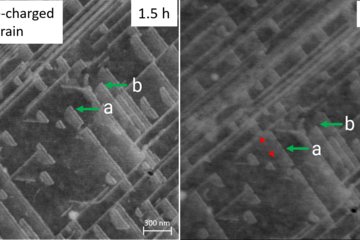All genres
1.
Journal Article
Der Einfluss der Mikrostruktur von Chromstählen auf die Chromdiffusion und die erste Oxidbildung. Fortschritt-Berichte VDI Zeitschrift, Verein Deutscher Ingenieure 5 (650), pp. 1 - 118 (2002)
2.
Journal Article
Surface treatment and cold working as tools to improve oxidation behaviour of chromium steels. 5th Int. Symp. on High Temperature Corrosion, pp. 319 - 326 (2001)
3.
Journal Article
The role of fast diffusion paths in the selective oxidation of chromium steels. Defect and Diffusion Forum 194-199, pp. 1689 - 1694 (2001)
4.
Thesis - PhD
Der Einfluss der Mikrostruktur von Chromstählen auf die Chromdiffusion und die erste Oxidbildung. Dissertation, Universität Dortmund, Dortmund (2002)











